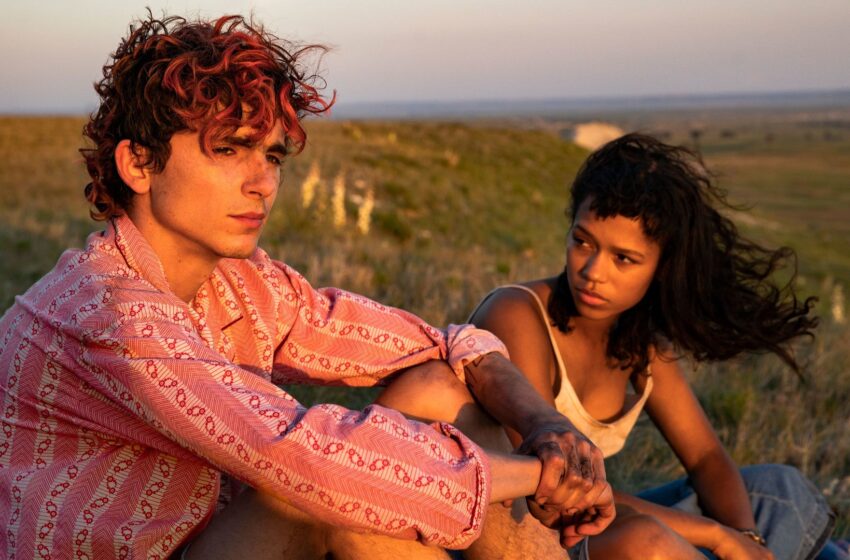
Horror meets romance in Bones and All
As already proven by Call Me By Your Name and Suspiria (2018), Luca Guadagnino is the master of mingling scenes that make you squirm with cinema that portrays genuine heart. This distinction is all the more blurred in his latest film because the heart becomes literal: it’s being eaten, gruesomely bloody, alongside other vital organs: Bones and All.
In Bones and All’s rendition of the eighties, cannibalism is much more prevalent than you might remember. In fact, ‘eaters’ make up an American subculture hidden just below the surface, able to (literally) sniff each other out among the normies. Maren (Taylor Russell) is one such ‘eater’, abandoned by her father after biting off a school friend’s finger in the opening sequence. Left only with a wad of cash, a birth certificate, and a cassette tape containing her father’s explanation for leaving, the narrative follows Maren’s journey to look for her mother. We accompany Maren as she navigates the North American road – and the moral landscape of cannibalistic living.
Maren meets and falls in love with Lee (Timothée Chalamet), a beat-up imitation of a teenage girl’s dream. The pair cultivate a tender romance amidst Guadagnino’s horror. The film’s blood, guts, and gore are offset by their humanness, two outcasts against the world. Contrasted against the creep factor of the more seasoned ‘eaters’ they meet, Maren and Lee are portrayed as afflicted by their nature. The result is weirdly empathetic – Bones and All is a love story with notes of horror rather than the other way around.
Guadagnino’s mesmerising tonal confusion is heightened by the beauty of Bones’ cinematography. The landscapes of Virginia, Minnesota, Ohio, and Kentucky are cast in a dusty, pastoral palette. Lingering shots of the open road and rolling fields bring with them a breathtaking nostalgia that softens the film as a whole. Special mention should, too, be given to Trent Reznor and Atticus Ross. Their delicate score injects quiet moments with emotion and lends a canvas of vulnerability to Lee and Maren’s characters.
Though not always explicit, there is a case to be made for Bones and All as queer coded. Maren’s aforementioned finger-biting incident is foregrounded by erotic tension – think hand-holding, stroking, intense eye contact – and Lee is given a similar scene with a male fairground worker later on. In these moments, the decision to set Bones in the 80s is significant beyond simply aesthetics. By using Reagan’s America as the film’s backdrop, a time when homophobic prejudice was widespread due to the AIDS pandemic, a social metaphor is brought into the mix. In Bones’ hidden world of cannibalism, Guadagnino delicately draws parallels with the queer experience. Romanticism punctured by bloody reality, Bones and All is, below the surface, a heartbreaking depiction of otherness.

